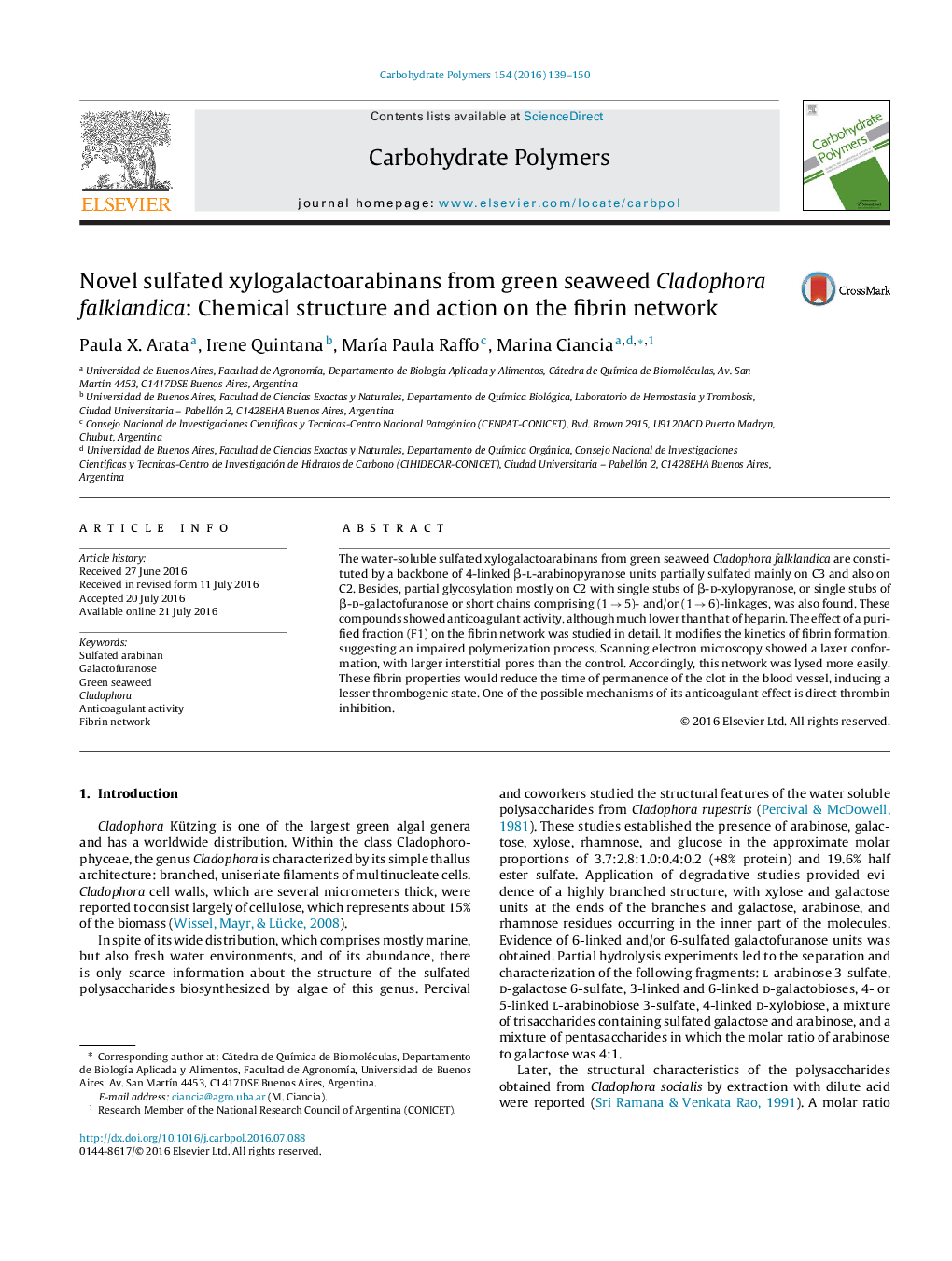| کد مقاله | کد نشریه | سال انتشار | مقاله انگلیسی | نسخه تمام متن |
|---|---|---|---|---|
| 1384701 | 1500604 | 2016 | 12 صفحه PDF | دانلود رایگان |

• Sulfated pyranosic β-l-arabinans were isolated from green alga Cladophora falklandica..
• The sulfated arabinans have β-d-xylopyranose and β-l-galactofuranose side chains.
• The sulfated arabinans are anticoagulants, although they are less active than heparin.
• Kinetics of fibrin formation and fibrinolysis in the presence of arabinan were studied.
• Arabinan gave laxer clots than control shown by scanning electron microscopy.
The water-soluble sulfated xylogalactoarabinans from green seaweed Cladophora falklandica are constituted by a backbone of 4-linked β-l-arabinopyranose units partially sulfated mainly on C3 and also on C2. Besides, partial glycosylation mostly on C2 with single stubs of β-d-xylopyranose, or single stubs of β-d-galactofuranose or short chains comprising (1 → 5)- and/or (1 → 6)-linkages, was also found. These compounds showed anticoagulant activity, although much lower than that of heparin. The effect of a purified fraction (F1) on the fibrin network was studied in detail. It modifies the kinetics of fibrin formation, suggesting an impaired polymerization process. Scanning electron microscopy showed a laxer conformation, with larger interstitial pores than the control. Accordingly, this network was lysed more easily. These fibrin properties would reduce the time of permanence of the clot in the blood vessel, inducing a lesser thrombogenic state. One of the possible mechanisms of its anticoagulant effect is direct thrombin inhibition.
Journal: Carbohydrate Polymers - Volume 154, 10 December 2016, Pages 139–150